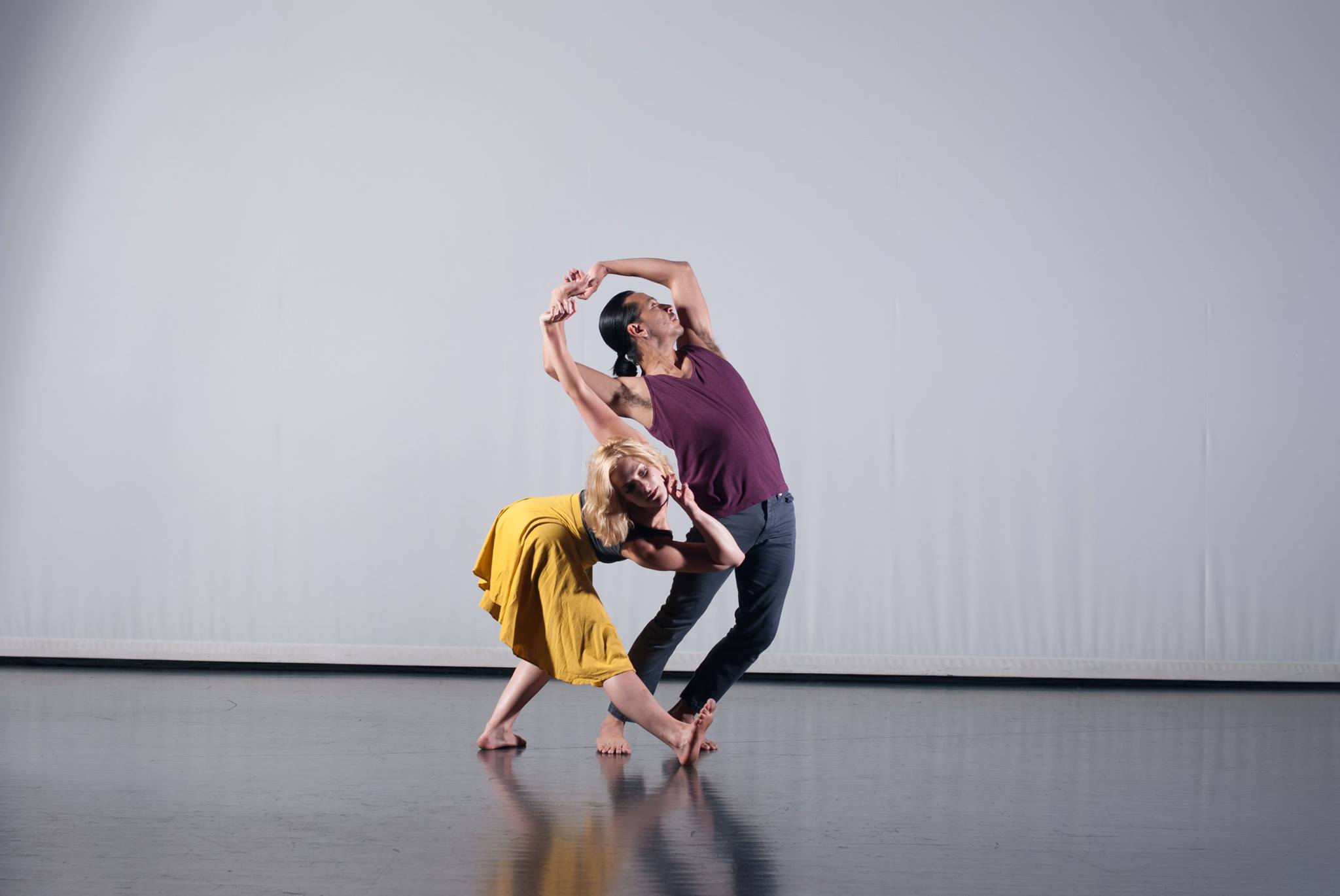SALT Contemporary Dance closed their 2016-2017 season with a collection of current works from local, national, and international choreographers. This was my first time witnessing a SALT performance and I am so grateful I finally had the opportunity.
The evening took place at Infinity Event Center. The venue was transformed into a contemporary auditorium where the audience could wander between upstairs and down and eventually find their seat below the stage. Seating was difficult without any sort of risers. I managed to sit eight rows back but ended up standing off to the side in order to see. The walls of Infinity Event Center are also incredibly thin. Music from next door blared throughout the night. (Unfortunately this has happened at every performance or event I’ve attended there.) Luckily, SALT was captivating enough for the distraction to be minimal in scope of the concert’s entirety.
Paper bags purposely littered the stage for Paper Cuts by Peter Chu, the opening number. The simple prop decorated the stage long before the concert started. My mind had the opportunity to wander, questioning what choreographic choices Chu would make with the simple and noisy prop. His choice of placing the bags overhead surprised me. It’s uncomplicated but somewhat dangerous. Chu’s image of the dancer moving with the paper bag left her blind and masked. What was she hiding? The two other dancers guided her throughout the stage and I was fascinated by her fearlessness and willingness to trust the others. Once the bag was lifted the dancers became braver, and stronger, with movement choices I interpreted as more masculine. They each demanded the audience’s attention with stark steps and pulsing contractions. Paper Cuts set a contrastingly powerful yet vulnerable tone for the evening. I found myself frequently going back to these two motifs. I was captured by how SALT managed to showcase a unique sense of vulnerability while displaying unwavering strength.
Voice of Reason by Ihsan Rustem followed. Blue lights echoed through the darkness as four dancers broke the stillness. My attention was caught and never left. Men highlighted the piano notes in the score while the women took control over the vocals. The combination was haunting. Rustem’s movement was connected and fluid. Each dancer spoke their own voice, their own story; then in a stunning moment, they all came together. Twelve dancers, twelve individual artists, executed unison on a heavy bass drop. It was the most refreshing dance image I’ve seen all year. This piece showcased SALT’s technique and work ethic, and appeared well-rehearsed within Rustem’s artistry. The piece ended in an evolution of the community breaking away. The stage was left with a final endless duet. It was constant motion, staying true to Rustem’s fluidity. I didn’t want to look away and I didn’t want the piece to end.
Eric Handman’s Omnivore closed the evening’s performance. I have always been a fan of Handman’s work and this was no different. Subtle waves of movement swept over the floor,as if the water held a steady pace. Handman’s work has a fierce attack to it, but Omnivore’s attack was soft and serene. There was a motif of partnerships and trios slowly falling in weight-bearing shapes that left me speechless. The shapes seemed to stop time. I allowed my mind to wander within this work and the imagery reminded me of Dali’s The Persistence of Memory. The melting watches are strong but sustained; the dancers held their ground but kept falling. The only reason you knew time still kept going was because the music acted as a backbone for the piece. It was one of the more beautiful works I’ve seen of Handman’s and SALT performed it effortlessly.
Ultimately, SALT is carving out their path in Salt Lake City’s dance community. They are speaking to the necessity for current and technical work. The performers have the maturity of a company that has been around much longer than just four years. SALT allows the audience to think while ascending to the architectural beauty of extremely technical dancing. I was completely captured by the beauty of the evening.
Temria Airmet is the Artistic Director of Myriad Dance Company. She received her BFA in Modern Dance from the University of Utah and currently teaches with Ballet West, Tanner Dance, and Millennium Dance Complex.





